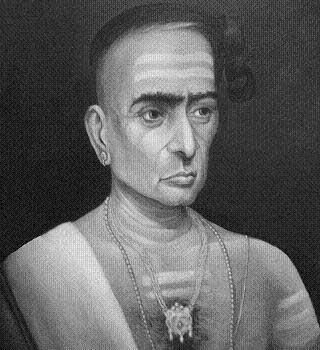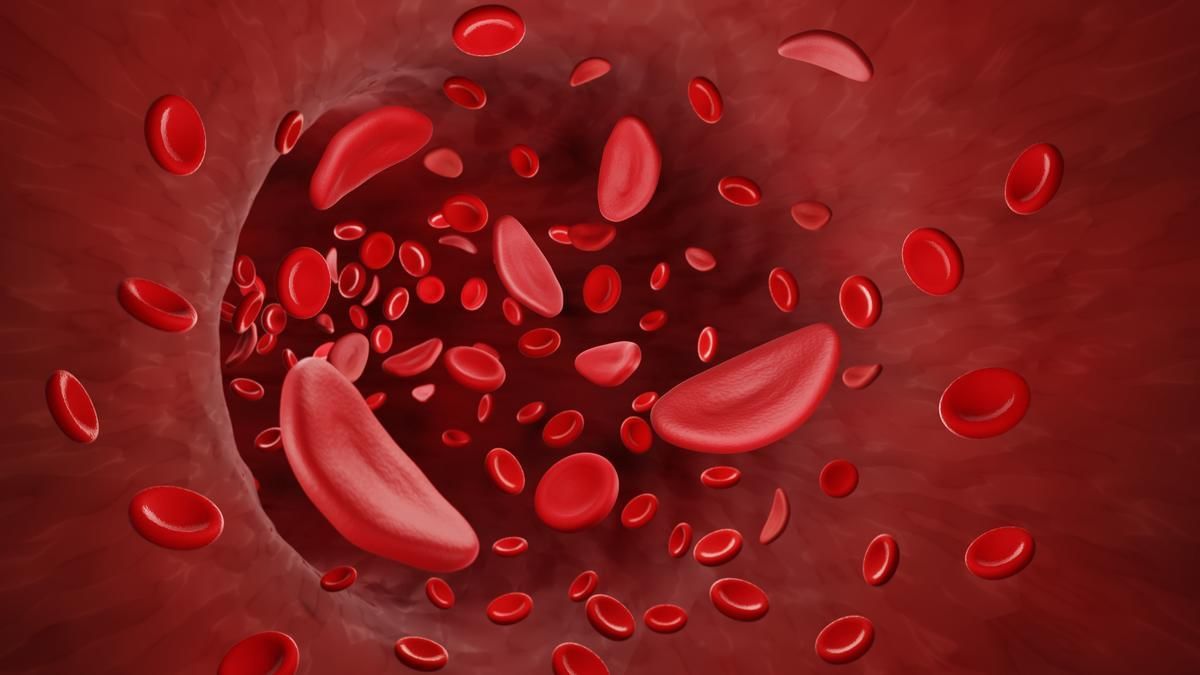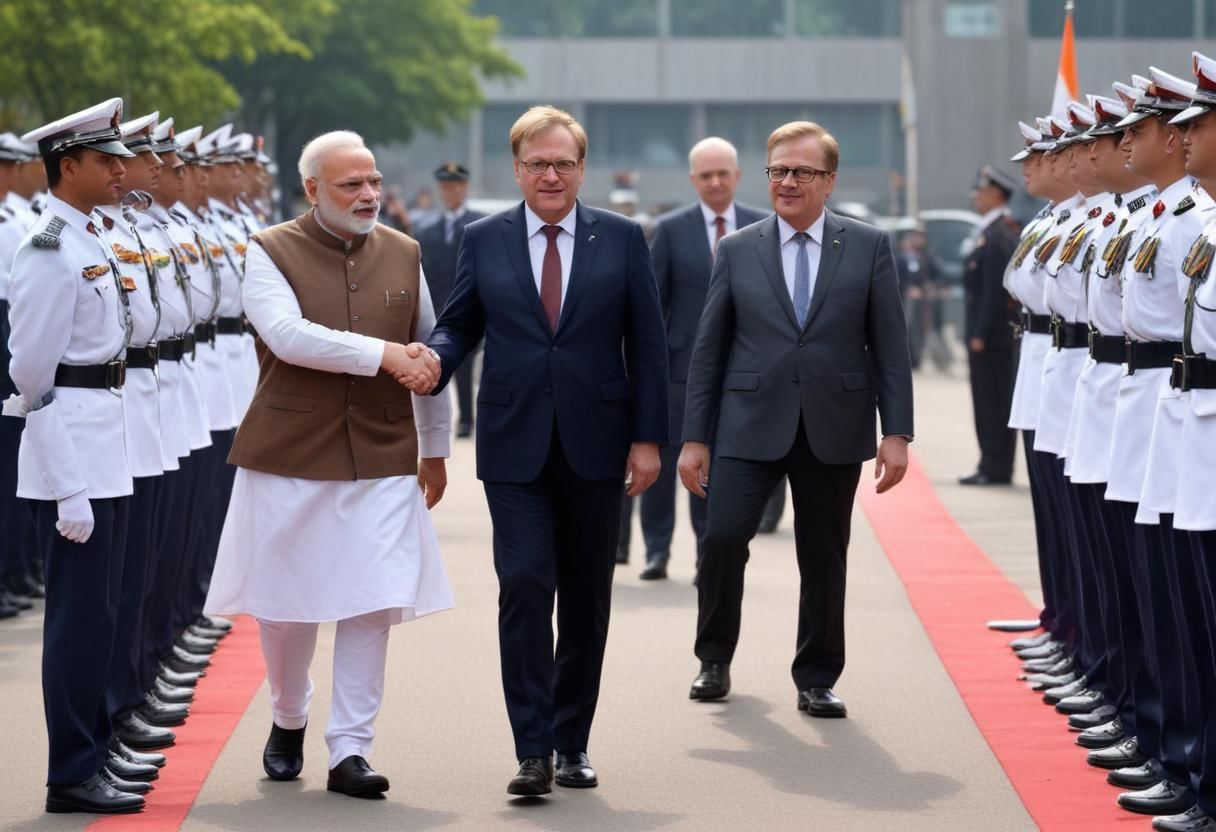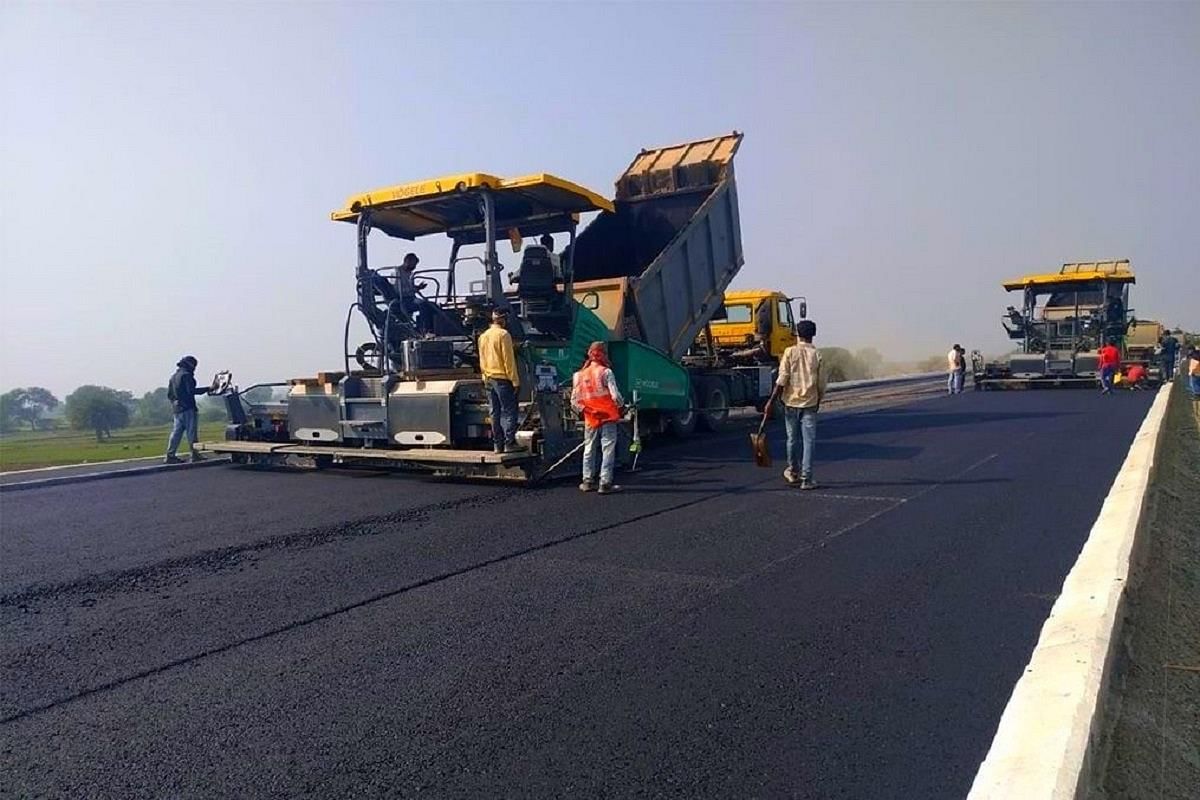UPSC Daily Current Affairs: 12th September 2024 | Current Affairs & Hindu Analysis: Daily, Weekly & Monthly PDF Download
GS3/Environment
Union Cabinet approves ‘Mission Mausam’
Source: The Hindu
Why in News?
The Union Cabinet has given its approval for ‘Mission Mausam’, which comes with a budget allocation of ₹2,000 crore over the next two years.
About Mission Mausam
- Mission Mausam aims to enhance research and development in weather surveillance, forecasting, and atmospheric sciences.
- The Ministry of Earth Sciences (MoES) will take the lead in implementing this mission.
- The mission is designed to establish a new standard for high-precision weather forecasting and management.
- Three key institutes under the MoES will spearhead the implementation:
- India Meteorological Department (IMD)
- Indian Institute of Tropical Meteorology (IITM)
- National Centre for Medium-Range Weather Forecasting (NCMRWF)
Critical Components of the Mission:
- Utilization of next-generation radars and satellite systems that are fitted with advanced sensors.
- Deployment of high-performance supercomputers to boost computational capabilities.
- Creation of enhanced earth system AI models and a GIS-based automated Decision Support System for real-time data sharing.
Benefits and Applications
- The mission is expected to provide significant advantages to various sectors, including:
- Agriculture: Enhanced weather predictions will assist in optimizing farming activities.
- Disaster Management: Improved preparedness for natural disasters.
- Defence, Aviation, and Shipping: Better forecasting will ensure operational safety.
- Energy, Water Resources, Power, and Tourism: Enhanced data-driven decision-making will benefit these sectors.
- Overall, Mission Mausam will facilitate improved urban planning, transport management, offshore operations, and environmental monitoring through better data utilization.
PYQ:
[2022] Discuss the meaning of colour-coded weather warnings for cyclone-prone areas given by the India Meteorological Department.
GS1/History & Culture
Who was Sakthan Thampuran (1751-1805)?
Source: Indian Express
Why in News?
The Ministry of Tourism has pledged to replace the Sakthan Thampuran statue that was knocked over by a state transport bus in Thrissur.
About:
- Sakthan Thampuran, originally named Raja Rama Varma IX, was a significant ruler of the Cochin kingdom from 1790 to 1805.
- He was raised by an aunt who gave him the nickname "Sakthan", which signifies power.
- The title "Thampuran" is derived from the Sanskrit word "samrat", meaning emperor.
- The Cochin kingdom was part of the Late Chera Empire, stretching from Ponnani (Malappuram) to Thottappally (Alappuzha) in modern-day Kerala.
- At the young age of 18, in 1769, he became the heir apparent and advised the king to maintain amicable relations with both the Dutch and the English.
- Sakthan Thampuran orchestrated the Mysore invasion of Travancore, leading to the Powney Treaty.
- This treaty liberated the Cochin kingdom from its allegiance to Mysore and formalized its relations with the British East India Company.
- He abolished the institution of Yogiatirippads, transferring temple management to the government.
- His leadership earned him the reputation of a formidable ruler who eradicated crime in his kingdom.
- He was instrumental in the Thrissur Pooram Festival's evolution and relocated the capital of his kingdom from Thrippunithura.
- Sakthan Thampuran developed Thekkinkadu Maidanam and the surrounding Swaraj Round, laying the groundwork for Thrissur's infrastructure.
- He encouraged merchants from various religions and British officials to settle in Thrissur and personally oversaw the kingdom's finances.
- In 1797, he initiated the Pooram Festival as an alternative to Arattupuzha Pooram, uniting major temples in Thrissur to pay homage to Lord Shiva.
- The festival is celebrated annually on Pooram day, coinciding with the moon's rise with the Pooram star in the Malayalam month of Medam.
PYQ:
[2021] With reference to Indian history, which of the following statements is/are correct?
1. The Nizamat of Arcot emerged out of Hyderabad State.
2. The Mysore Kingdom emerged out of the Vijayanagara Empire.
3. Rohilkhand Kingdom was formed out of the territories occupied by Ahmad Shah Durrani.
Select the correct answer using the code given below:
(a) 1 and 2 only
(b) 2 only
(c) 2 and 3 only
(d) 3 only
GS3/Science and Technology
India’s Sickle Cell Challenge
Source: The Hindu
Why in News?
The Prime Minister has reaffirmed the government’s dedication to addressing sickle cell disease, a genetic blood disorder that alters the shape of red blood cells.
About the National Sickle Cell Anaemia Elimination Mission:
- The Union Budget 2023-24 announced a mission to eradicate sickle cell anemia by 2047.
- This initiative emphasizes awareness and screening programs for individuals aged 0 to 40.
- The objective is to lessen the impact of sickle cell disease, which predominantly affects the tribal regions of India, including Odisha, Jharkhand, Chhattisgarh, Madhya Pradesh, and Maharashtra.
- Key strategies include incorporating essential medicines, such as hydroxyurea, into the essential medicines list and enhancing access to treatment.
Challenges faced by the Indian Government:
- High Disease Burden: India holds the second-largest global burden of sickle cell disease, with over a million individuals affected, mainly in tribal areas.
- Low Treatment Coverage: Only 18% of affected individuals receive consistent treatment, facing significant challenges in screening, diagnosis, and adherence to treatment protocols.
- Stigma and Misinformation: Social stigma surrounding the disease, along with myths such as it being “God’s curse” or “black magic,” lead to mistrust in public health systems, particularly in tribal communities, causing delays in diagnosis and treatment.
- Treatment Adherence Issues: Obstacles include irregular availability of medicines like hydroxyurea, long travel distances to treatment facilities, and stock shortages at health centers.
- Poor Vaccination Coverage: Vaccination, which can lower infection rates and enhance quality of life, remains insufficient in many affected areas.
- Research and Development: There is a lack of ongoing research into treatment options and understanding of the disease in India, coupled with the high costs of emerging therapies like gene therapy, which impedes long-term progress.
- Financial and Operational Gaps: Health systems in tribal areas require more funding and operational support to tackle region-specific health challenges effectively.
What are the WHO recommendations?
- Early Identification: Establish newborn screening programs to detect sickle cell disease at birth.
- Integration into Health Systems: Sickle cell management should be incorporated into national health services, including the creation of specialized centers for comprehensive care and training for primary healthcare providers.
- Public Education and Awareness: Launch public education campaigns to raise awareness about sickle cell disease, mitigate stigma, and inform communities about genetic risks and prevention strategies.
- Genetic Counseling: Provide genetic counseling to families, particularly in high-prevalence communities, to educate them on the risks of having children with sickle cell disease and the significance of carrier screening.
Mains PYQ:
Stem cell therapy is gaining popularity in India to treat a wide variety of medical conditions including leukaemia, Thalassemia, damaged cornea, and several burns. Describe briefly what stem cell therapy is and what advantages it has over other treatments.
GS2/Polity
Effectuation of fundamental duties a continuing task - Attorney General of India
Source: Indian Express
Why in News?
The Attorney General of India, R. Venkataramani, addressed the Supreme Court regarding the effectuation of Fundamental Duties. He emphasized that it is a task requiring duty-specific legislation, schemes, and supervision.
Observation made by Attorney General of India in Supreme Court
- About
- Fundamental Duties are moral obligations outlined in the Constitution of India that every citizen is expected to uphold.
- These duties are specified in Article 51A under Part IV-A of the Constitution.
- They highlight citizens' responsibility to uphold the Constitution's spirit and contribute to national development and well-being.
- While these duties are not legally enforceable, they serve as guiding principles to cultivate civic responsibility.
- These duties were inspired by the USSR (Russia) constitution.
- The inclusion of Fundamental Duties aligns the Indian Constitution with Article 29(1) of the Universal Declaration of Human Rights and modern constitutions of various countries.
- Evolution and Amendments
- Original Constitution (1950): Initially, the Indian Constitution did not include any provisions for Fundamental Duties.
- 42nd Amendment (1976): The Swaran Singh Committee was established during the Emergency to recommend constitutional amendments, leading to the addition of Part IV-A and Article 51A, which included 10 Fundamental Duties to remind citizens of their moral responsibilities.
- 86th Amendment (2002): The 11th Fundamental Duty was introduced, mandating that parents or guardians provide educational opportunities for their children.
- As of now, Article 51A details 11 Fundamental Duties for citizens of India.
- Important Supreme Court Judgments Regarding Fundamental Duties
- Chandra Bhavan Boarding and Lodging v State of Mysore (1969): This case highlighted that the Constitution envisions both rights and duties.
- M.C. Mehta v Kamal Nath II (2000): The court acknowledged the role of protecting the environment as a fundamental duty, emphasizing the importance of Article 51A(g) which mandates citizens to improve and protect the natural environment.
- Rangnath Mishra Commission Case (2003): The Supreme Court instructed the Centre to implement recommendations from the Justice J.S. Verma Committee aimed at publicizing Fundamental Duties.
- Javed v State of Haryana (2003): The apex court underscored that Fundamental Duties are as significant as Fundamental Rights and essential for societal progress.
- In Re Ramlila Maidan Incident v Home Secretary (2012): The court noted that while citizens have Fundamental Rights, there is a corresponding duty to obey lawful orders and contribute to public order and tranquility.
Ways To Effectuate These Duties
- Conduct awareness and education campaigns.
- Integrate Fundamental Duties into school curricula to instill responsibility among children.
- Implement government initiatives or policies that encourage compliance, such as promoting respect for national symbols and environmental conservation.
- Utilize judicial interpretation where courts reference Fundamental Duties in legal contexts to reinforce civic responsibility.
Justice Verma Committee for Effectuation of Duties
- The committee was established in 1998 to formulate an effective strategy for enforcing Fundamental Duties, aiming to cultivate civic responsibility from an early age.
Identified laws for enforcing Fundamental Duties:
- Prevention of Insults to National Honour Act, 1971: Disrespecting the National flag, Constitution, and National Anthem is unlawful under this act.
- Protection of Civil Rights Act, 1955: This act offers legal provisions and penalties for caste and religion-related offenses, promoting civil rights and equality.
- Representation of the People Act, 1951: This law holds members of Parliament or state legislatures accountable for corrupt practices, ensuring ethical election conduct.
- Wildlife (Protection) Act, 1972: This act fosters conservation efforts and biodiversity preservation.
- Forest (Conservation) Act, 1980: This law supports the proper enforcement of Article 51A(g).
Background of the case
- The Supreme Court was hearing a plea from lawyer Durga Dutt, requesting the Centre to enact clear laws or rules to ensure adherence to the fundamental duties defined in the Constitution.
- The plea argued that non-compliance with Fundamental Duties affects Articles 14, 19, and 21 and called for the creation of schemes to incentivize citizens to follow these duties.
- It also sought guidelines from the Centre and states to enhance public awareness and encourage compliance.
Observations made by the Attorney General of India
- The Attorney General stressed that the effectuation of Fundamental Duties is a continuous task.
- He noted that the judiciary should not compel the legislature to enact laws, especially when such matters are under legislative review.
- He underscored that the Supreme Court has consistently acknowledged the importance of Fundamental Duties in constitutional interpretations and in imposing social obligations on citizens.
- However, he pointed out that Fundamental Duties are non-justiciable, and their execution primarily rests with the executive branch.
- He mentioned a 1998 committee formed by the Centre to educate and operationalize Fundamental Duties.
- The Attorney General argued that merely incorporating these duties in the Constitution is inadequate without proactive government efforts, particularly in education and cultural initiatives.
- He urged the court to recognize the steps already taken and to conclude the case with appropriate directions.
GS2/International Relations
With an eye on Indo-Pacific, Germany seeks greater defence ties with India
Source: The Hindu
Why in News?
External Affairs Minister S. Jaishankar, currently in Germany as part of a three-nation tour, met with German Foreign Minister Annalena Baerbock in Berlin. They discussed various defence topics, including Ukraine, Gaza, and the Indo-Pacific region.
Defence Partnership between India and Germany:
- Late Engagement: Germany has been slower to engage with India's defence interests compared to countries like France and the U.S., who maintain stronger partnerships with India.
- Opportunity Post-Russia-Ukraine War: With Russia's industrial capacity focused on the conflict, Germany sees a chance to boost its defence exports to India. German firms such as ThyssenKrupp Marine Systems are already involved in projects like submarine construction for the Indian Navy.
- Technology Transfer: A key condition for India's defence partnerships is technology transfer. Germany's ability to meet this requirement will be vital for future collaboration.
- Complementary Systems: Germany's Eurofighter and its future replacement by U.S.-made F-35s indicate its readiness to integrate defence systems with Western platforms, which could ease interoperability issues for India.
Exercise Tarang Shakti:
- One of the largest multilateral air exercises hosted by the Indian Air Force (IAF), it demonstrates India’s commitment to international defence cooperation.
- This exercise marked the first participation of the German Luftwaffe (Air Force) in air sorties over Indian territory, symbolizing the strengthening of defence ties between Germany and India.
- It is set to become a biennial exercise, emphasizing India's intent to establish multinational military cooperation as a regular occurrence.
- Tarang Shakti served as a precursor to the larger Pacific Skies 24 air exercise involving France, Germany, and Spain, which underlines the growing military significance of the Indo-Pacific region.
Present Dilemma of China:
- Germany’s Strategic Interest in the Indo-Pacific: China's aggressive actions, such as constructing artificial islands in the South China Sea, threaten regional stability and crucial international shipping routes, which are vital for Germany's trade.
- Germany’s Balancing Act: Although Germany has a clear political stance against China's actions in the Indo-Pacific, its economic reliance on China complicates its position. Germany's increasing military presence in the region aims to secure vital shipping routes.
- Europe’s Shift in Focus: In the wake of the Russia-Ukraine war, Europe, including Germany, is recalibrating its foreign policy towards the Indo-Pacific, recognizing it as the future epicenter of global economic and geopolitical influence, leading to greater German defence engagement in the area.
Way Forward:
- Enhance Defence Collaboration: India and Germany should prioritize deepening defence cooperation, particularly in technology transfer, joint military exercises, and advanced systems integration to foster long-term strategic partnerships.
- Strengthen Indo-Pacific Engagement: Germany and India should align their strategies in the Indo-Pacific to ensure regional stability, focusing on the importance of free trade routes and countering China's assertiveness while managing economic dependencies.
Mains PYQ: To what extent can Germany be held responsible for causing the two World Wars? Discuss critically. (UPSC IAS/2015)
GS3/Environment
Indian Government’s EV Push
Source: Indian Express
Why in News?
The PM-led Union Cabinet approved the ‘PM Electric Drive Revolution in Innovative Vehicle Enhancement (PM E-DRIVE) Scheme' for promotion of electric mobility in the country. The scheme, proposed by the Ministry of Heavy Industries (MHI), will replace the existing FAME programme and has an outlay of Rs 10,900 crore over a period of two years.
India’s EV Revolution:
- Need: At the COP26 to the UNFCCC (held in Glasgow, UK, in 2021), the Indian PM presented to the world Panchamrit of India’s climate action plan.
- Panchamrit Elements:
- Increasing non-fossil fuel capacity by 500 GW by 2030.
- 50% of energy requirements from renewable sources by 2030.
- Reduction of total projected carbon emissions by 1 billion tonnes from now to 2030.
- Reduction of carbon intensity of the economy by 45% from 2005 levels by 2030.
- Achieving net zero emissions by 2070.
- The PM also highlighted ‘Lifestyle for Environment’ (LiFE), a global mission promoting sustainable lifestyles.
- Electric vehicles (EVs) contribute to achieving Panchamrit and LiFE goals by lowering emissions and enhancing energy security.
- Steps taken by India:
- National Electric Mobility Mission Plan (NEMPP):
- Launched in 2013 with the aim of deploying 5 to 7 million EVs by 2020.
- Aimed to reduce vehicular emissions by 1.3 to 1.5% by 2020.
- Faster Adoption and Manufacturing of Electric Vehicles (FAME) India Scheme:
- Implemented since 1st April 2015 to promote EV manufacturing and sustainable growth.
- Subsidies provided to narrow the price gap between electric and fossil fuel vehicles, encouraging consumers to choose cleaner options.
- FAME I ran until 2019; FAME II (ending on 31 March 2024) allows companies to offer discounts up to 40% on locally manufactured vehicles.
- Production Linked Incentive (PLI) Scheme for the Automotive Sector:
- Focuses on boosting domestic production of advanced automotive technologies and attracting investments.
- PLI Scheme for National Programme on Advanced Chemistry Cell (ACC) Battery Storage:
- Aims to enhance manufacturing capabilities for ACC batteries in India.
- National Electric Mobility Mission Plan (NEMPP):
Achievements of India’s EV revolution:
- The Indian EV market value was US$2bn in 2023, projected to reach US$7.1bn by 2025, with expectations of 10 million annual sales by 2030.
- Two-wheelers are leading this market growth, expected to comprise 40-50% of total EV sales by 2030.
- The number of public charging stations increased from 1,800 to 16,347 in just two years.
Challenges Facing the EV Revolution:
- Poor charging infrastructure.
- Higher costs compared to traditional vehicles.
- Battery lifespan issues.
- Talent gap in the EV sector.
- Lack of standardization in charging infrastructure and technologies.
- Regulatory challenges, including unclear guidelines.
About the PM E-DRIVE Scheme:
- Objectives: The scheme aims to accelerate the adoption of EVs in India through upfront purchase incentives and enhancing charging infrastructure.
- Environmental Goals: It seeks to mitigate transportation's environmental impact and improve air quality via promotion of EVs, mass public transport, and advanced technologies.
Key Highlights:
- Subsidies and Demand Incentives: Rs 3,679 crore allocated to incentivize purchases of electric two-wheelers, three-wheelers, ambulances, trucks, and other EVs.
- E-Vouchers for EV Buyers: Buyers will receive an Aadhaar-authenticated e-voucher after purchase, sent to their registered mobile number for claiming incentives.
- E-Ambulance Deployment: Rs 500 crore budgeted for deploying electric ambulances to ensure eco-friendly patient transport.
- E-Buses for Public Transport: Rs 4,391 crore allocated for procuring 14,028 e-buses by State Transport Undertakings (STUs) and public transport agencies.
- Incentives for E-Trucks: Rs 500 crore earmarked to encourage the use of e-trucks, addressing significant air pollution sources.
- Charging Infrastructure: Rs 2,000 crore allocated to install public charging stations in high EV penetration cities and select highways to mitigate range anxiety.
- Modernisation of Testing Facilities: Rs 780 crore approved for upgrading MHI’s testing agencies to handle new green mobility technologies.
GS3/Economy
Launch of PM Gram Sadak Yojana- Phase IV
Source: Indian Express

Why in news?
The Union Cabinet has approved Phase IV of the Pradhan Mantri Gram Sadak Yojana (PMGSY-IV), aiming to construct 62,500 km of all-weather roads to connect villages across India.
- About Pradhan Mantri Gram Sadak Yojana (PMGSY)
- Initiated in 2000 by former Prime Minister Late Atal Bihari Vajpayee.
- Aim: To provide connectivity to unconnected habitations.
- Nodal Agency: Ministry of Rural Development
- Type: Centrally Sponsored Scheme
- Phases of PMGSY
- Phase I: Focused on connecting unconnected habitations.
- Phase II: Upgraded roads built in Phase I to enhance rural infrastructure.
- Phase III: Consolidation of 1.25 lakh km of rural roads connecting habitations to Gramin Agricultural Markets, Higher Secondary Schools, and Hospitals.
- Cost: ₹80,250 crore (2019-2025).
- Funding Ratio: 60:40 (Centre), 90:10 for North-East and Himalayan States.
- Phase IV: Aims to construct 62,500 km of all-weather roads to connect 25,000 unconnected habitations with a focus on areas affected by Left-Wing Extremism (LWE), tribal regions, and remote locations.
- Road Length and Coverage
- 62,500 km of all-weather roads aimed at connecting 25,000 previously unconnected habitations.
- Benefits of PMGSY-IV
- Road Connectivity for 25,000 Villages: The project will provide all-weather roads that ensure reliable access to previously unconnected rural areas, enhancing transportation and accessibility.
- Socio-Economic Transformation: These roads will serve as catalysts for socio-economic development in rural regions, facilitating access to government educational institutions, health services, markets, and economic growth centers.
- Enhanced Infrastructure: The construction will adhere to international standards and best practices, incorporating technologies such as Cold Mix Technology, Waste Plastic, and Full Depth Reclamation, along with eco-friendly materials like Fly Ash and Steel Slag.
Previous Year Question (PYQ)
[2020] In rural road construction, which of the following is preferred for ensuring environmental sustainability or to reduce carbon footprint?
1. Copper slag
2. Cold mix asphalt technology
3. Geotextiles
4. Hot mix asphalt technology
5. Portland cement
Select the correct answer using the code given below:
(a) 1, 2 and 3 only
(b) 2, 3 and 4 only
(c) 4 and 5 only
(d) 1 and 5 only
GS2/Governance
Ayushman Bharat health insurance for senior citizens
Source: Indian Express
Why in news?
The Union Cabinet has approved the expansion of the Ayushman Bharat Pradhan Mantri Jan Arogya Yojana (AB PM-JAY) to extend health coverage to all senior citizens aged 70 years and above, regardless of their income status.
Ayushman Bharat Pradhan Mantri Jan Arogya Yojana (AB-PMJAY)
About
- Launched in September 2018, the AB-PMJAY scheme aims to provide secondary and tertiary healthcare services to economically vulnerable populations.
- It is a key component of the broader 'Ayushman Bharat' initiative.
- The scheme offers a medical coverage limit of Rs. 5 lakh per family per year for hospitalizations related to secondary and tertiary care.
- Approximately 40% of the population, targeting the poorest and most vulnerable groups, is covered under this scheme.
Eligibility
- The scheme targets 10.74 crore economically disadvantaged rural families, as well as urban worker families identified through occupational categories.
- Beneficiaries are determined based on the latest Socio-Economic Caste Census (SECC) data.
Benefits
- The scheme provides cashless access to healthcare services for beneficiaries at the time of service, i.e., at the hospital.
- Eligible families receive an insurance coverage benefit of Rs. 5 lakh annually.
- Health Benefit Packages cover various medical needs, including surgeries, treatments, medication costs, and diagnostic tests.
Role of National Health Authority (NHA)
- The NHA is the central authority responsible for the implementation of the AB PM-JAY scheme.
- It is tasked with strategy design, technological infrastructure development, and executing the National Digital Health Mission to establish a National Digital Health Ecosystem.
- State Health Agencies (SHAs) have been created by various states to facilitate the scheme's implementation at the state level.
Performance
About the news
- The recent expansion by the Union Cabinet allows for health coverage for individuals aged 70 and above, irrespective of their income, under the public healthcare system.
- Previously, the scheme was income-based and provided Rs 5 lakh annual coverage to eligible families without age restrictions.
- Currently, it is estimated to cover the economically disadvantaged segment comprising the bottom 40% of the population.
Extension of the scheme
- The new extension will cover all senior citizens aged 70 and above, enabling them to access Rs 5 lakh annual coverage per family.
- This expansion is expected to benefit an additional 6 crore elderly individuals from approximately 4.5 crore families.
Coverage under new plan
- Senior citizens aged 70 and above, who belong to families already covered by AB PM-JAY, will receive an additional shared coverage of up to Rs 5 lakh per year.
- If multiple senior citizens (70+) reside in a single family, the Rs 5 lakh coverage will be shared among them.
- Those enrolled in other public health insurance schemes, such as CGHS, ECHS, or Ayushman CAPF, can choose to continue their current plans or switch to AB PM-JAY.
- Additionally, senior citizens with private health insurance policies or those under the Employees’ State Insurance Scheme will also be eligible for AB PM-JAY benefits.
Other features
- This is a demand-driven scheme, meaning that as demand increases, the coverage will also be adjusted accordingly.
- Each beneficiary aged 70 and above will be issued a new health card, facilitating easier access to healthcare services.
- This expansion is anticipated to significantly alleviate the healthcare burden faced by elderly individuals, who often lack a reliable social security safety net.
- As India moves toward more nuclear family structures, the financial challenges for elderly citizens become more prominent, making this initiative crucial.
- While Ayushman Bharat aims for universal health coverage, this will be the first age group to receive comprehensive coverage.
|
38 videos|5288 docs|1117 tests
|
FAQs on UPSC Daily Current Affairs: 12th September 2024 - Current Affairs & Hindu Analysis: Daily, Weekly & Monthly
| 1. What is the main objective of Mission Mausam? |  |
| 2. Who was Sakthan Thampuran and what was his significance in Indian history? |  |
| 3. How does the Indian Government address the Sickle Cell Challenge? |  |
| 4. What are the fundamental duties as stated in the Indian Constitution? |  |
| 5. What is the focus of India's EV Push and its implications for the environment? |  |
















